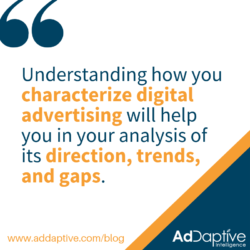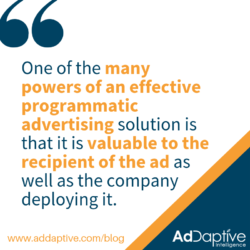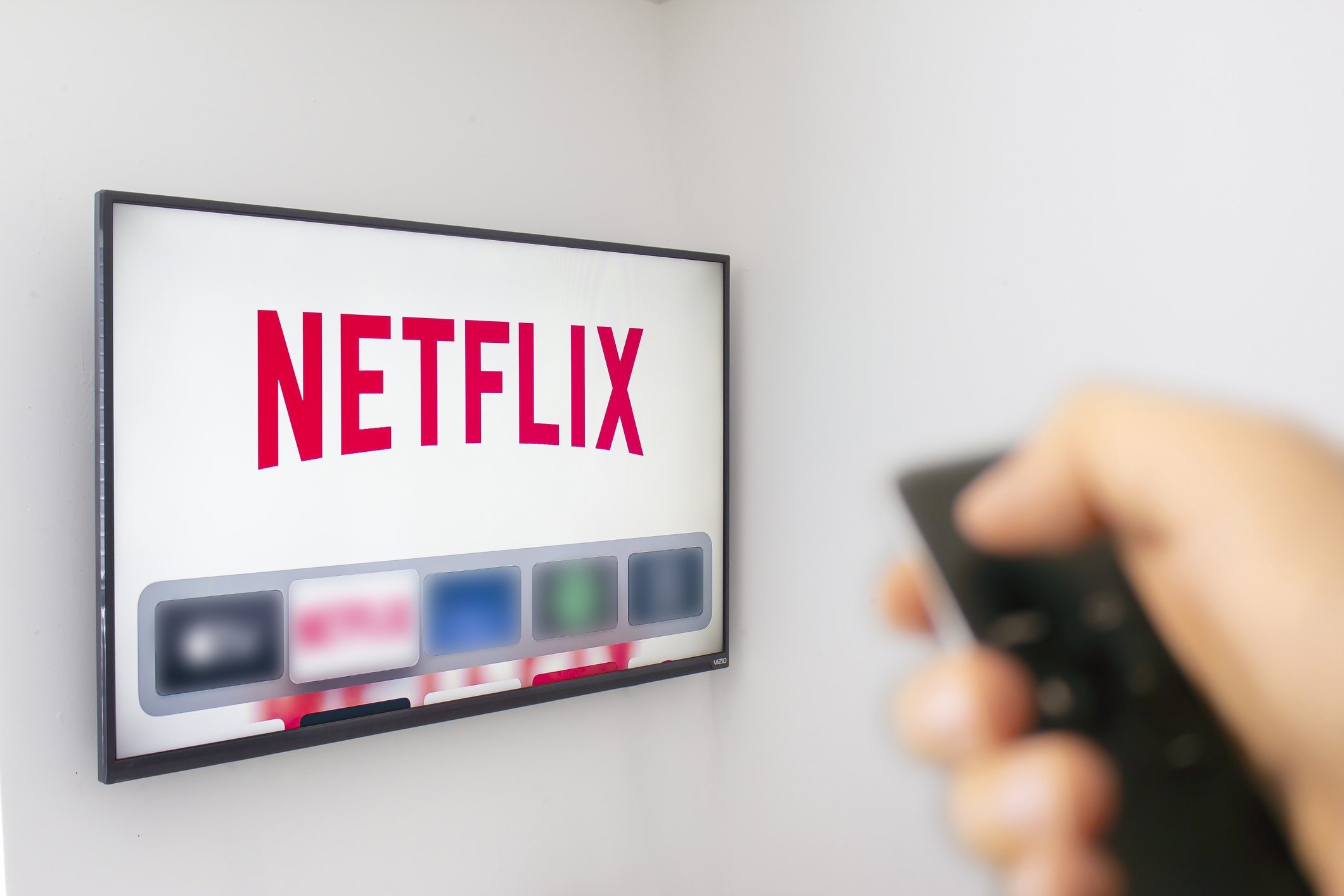Digital Advertising Personified
In psychology, a schema describes a pattern of thought or behavior that organizes categories of information and the relationships among them (source). Schemata are mental concepts that inform us about what to expect from an experience or situation. For example, your self-schema illustrates how you think about yourself and how you act in concordance with your perception of yourself (source). Your schema about public policies determines which political party you more closely associate with, or which laws and regulations you agree with or disagree with and why (source). And your schema about digital advertising encompasses your attitudes, thoughts, and behaviors related to your advertising experience via digital channels.
Like most things in life, our relationship with digital advertising dictates our response to it. The way we think about it, the first thoughts that pop into our head that we associate with it, the visceral reaction we get when we hear news about it…all these things and more contribute to our schema of digital advertising.
Even in a technological setting, or perhaps more so in this situation, our mindset matters. Because technology is a tool, our mindset contributes to how successfully we believe we can use the tool – or how effective the tool is at impacting us. Digital advertisers use tools to be successful and to reach audience members; they develop strategies around the implementation of these tools. Our mental and emotional relationship with digital advertising is important to reflect upon and understand, because it will affect our views of it as well as our reception to the technology used to complement it. Our attitude towards it, our relationship with it, and our response to it are dictated by our view of its role in our lives.

In order to understand its role, we can first personify it. Similar to the way marketers create a persona for their target customer base, we can create one here. How would you personify digital advertising? Is it a friend? Or an intruder? Would its career be in service, helping people live better lives? Or would it be a peripheral role that is more “nice to have” than crucial to the underpinnings of a healthy society? Does it embody a modern, cutting edge approach, or does it represent a passing fad? Understanding how you characterize digital advertising will help you in your analysis of its direction, trends, and gaps.
If you see digital advertising as something that perforates every aspect of life and should not be ignored, you will respond differently to news stories than someone who believes it is a fad that will fizzle away with time. Recognizing the meaning behind your relationship with digital advertising will reveal your stance and predict your reactions to future developments.
Understanding your feelings about digital advertising will also help you determine whether you want or need to learn more about it in order to more fully form an opinion rooted in truth. In other words, there is always something to be said about facts, though people are more likely to believe a fact that aligns with their preconceived notions about something. For example, eMarketer forecasts that US ad spending will grow 6.6% in 2018, reaching $220.96 billion (source). Does this statistic make you hopeful or worried? Display ads placed on your mobile devices will account for a large percentage of the advertisements you see and are a huge part of companies’ marketing strategies. Companies with extensive research and analytics resources would not be placing so much budget behind digital advertising if it were not expected to deliver favorable results. The reason companies’ expenditure on digital ads is growing is that people are responding to them – it’s as simple as that. Would you put the majority of your marketing budget behind an initiative that held more risk than reward? You may put a small percentage toward it to test it, but not upwards of 70% of your budget. Instead, wouldn’t you allocate your budget in favor of a channel that yielded positive results year over year? In a word, yes. The financial implications of the digital advertising industry explain why so many brands are spending more and more money on display ads in particular: They work.
At this point, you may be skeptical. You may be thinking, “They might work, but not on me.” But maybe they actually are working on you without your even realizing it. Non-intrusive advertising or native advertising may be registering in your subconscious as you peruse the internet, impacting your opinions or behaviors without your conscious knowledge or effort. Or, even more likely, maybe you simply haven’t been shown the right ads, so you perceive the advertising experience as more of a nuisance than anything else, which is entirely understandable. Depending on how steadfast you are in your beliefs, programmatic advertising may be able to change your mind.

One of the many powers of an effective programmatic advertising solution is that it is valuable to the recipient of the ad as well as the company deploying it. If the technology is powerful enough and the data is reliable enough, digital ads delivered programmatically should reach people who want to see them. The company deploying that ad would be happy that the impression was not wasted and that their budget went to good use; similarly, the recipient of the ad might actually be interested in the content or company behind the ad and be happy they saw that advertisement as opposed to one without much relevance. In this instance, the advertising experience is a positive one, and enough positive experiences can change resistors’ viewpoints drastically.
An effective programmatic advertising solution can do this – reach the people who want to be reached – at scale, and they can do it without violating privacy laws. This is especially advantageous in the B2B world, which often faces more hurdles than B2C concerning the content of ads or how to target individuals at businesses while adhering to their personal privacy. It is important to note that this is not impossible: There are ways to ethically manage advertising campaigns and target business influencers at scale without violating privacy laws. Some programmatic advertising technologies can target the right people at the right businesses with relevant ads at scale, creating a positive experience for the recipient of those ads as well as the company deploying them. That should be our collective aspiration – narrow targeting, large scale, minimized wasted spend, personal privacy, and content relevance. In this day and age, that vision is not so far-fetched; in fact, it is well within reach, if we use the right technological tools to get there. On the advertising side, we just have to be creative and bold enough to create the technology that can achieve such favorable results; and if we’re not there yet, we should keep working toward that ideal and reshaping the future of digital advertising to grow into something that benefits all parties involved.
If we can change our mindset, we can change our response as well as the outcome. Perhaps we should consider digital advertising objectively based on financial logic or the scientific placement of ads, or maybe we should approach it warmly like an old friend, listening to its newest improvements and supporting its positive growth. Maybe we should give it the benefit of the doubt, knowing that companies who deploy their ads programmatically have a better chance of giving us advertisements that are relevant to us. Some people may think about advertising pessimistically, but they are not the majority; better yet, we have the opportunity to change our minds and think about it optimistically, which could therefore carve out a better future for ourselves. As consumers, we should want to see ads that are relevant to us, especially if it can be done without our privacy being compromised (which it can). Our perception of advertising will dictate the future of the industry, since companies are paying attention and tweaking their offering based on what we need. As advertisers, we should want to minimize wasted spend by delivering ads to quality leads by understanding them and analyzing our ability to reach them through our technologies. We should be listening to what consumers want and tailoring our approach based on what they will respond to – which is founded in both what they need in that moment and their general feelings about advertising. A consumer’s positive mindset toward advertising can improve ROI on an advertiser’s campaign, proving their intrinsic link on the measure of success. By enhancing the advertising experience, we can create a more positive schema for digital advertising among our consumers, improving their psychological and physical reactions to ads and to the industry overall, which will help usher in a more positive future for advertisers and consumers alike.









